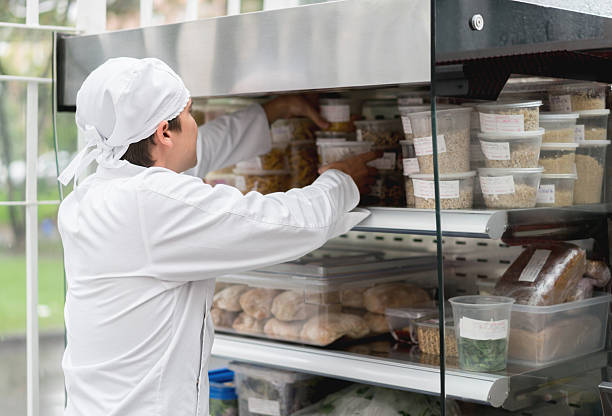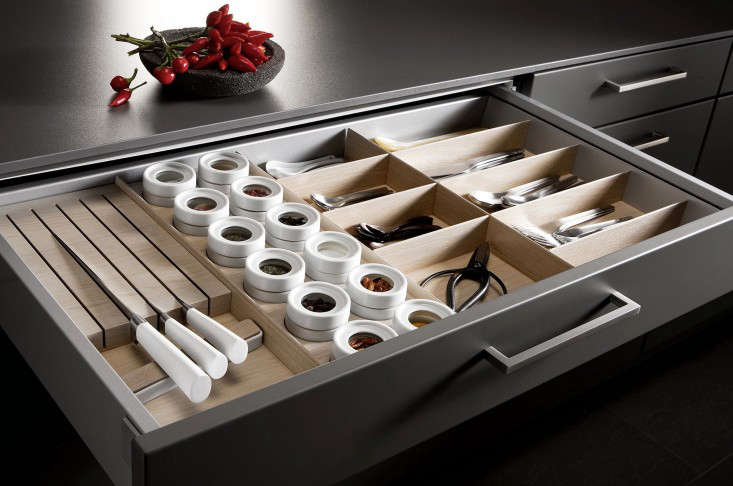The restaurant kitchen is an area that needs to be properly sorted out. An unorganized kitchen can lead to low productivity from your employees or worse, injuries. In this article, we will guide you through commercial kitchen organization process.
Why You Need to Organize Your Restaurant Kitchen
Some will argue that commercial kitchen organization is mainly for aesthetic purposes. While this is true and can also be a benefit itself, there are other reasons why organizing your restaurant kitchen is a must. One example of a well-organized restaurant kitchen is that it can lead to easier work for the restaurant staff. Other reasons let’s discuss below.
Safety Concerns
A decluttered restaurant kitchen is an accident waiting to happen. For example, unorganized knives can lead to cuts and nicks. In addition to that, unattended wires in the kitchen can lead to tripping accidents and fire accidents. Organizing your restaurant kitchen will reduce all hazards and potential accidents and give your employees peace of mind.

Reduce Unwanted Purchases
If your restaurant chiller or cupboard is unorganized, there’s a high chance of you missing out on ingredients that you already have in the first place. Organizing these sections to make food items plain to see will help your restaurant lower inventory costs. It is also important to have an inventory control in place to see which items go in and out daily.
Increase Efficiency in the Kitchen
Having an organized kitchen can save your employees time when they’re tracking down a certain ingredient. In addition, the BOH can also instill time-saving procedures such as food preps and portioning when you have an organized restaurant kitchen.
A dedicated storage for deliveries can help in reducing time for transporting in of goods. Whenever deliveries arrive, everyone knows where to put the respective items. On the other hand, getting items from storage will also save time as everyone knows where each ingredient is located.
Reduce Wastages
There are several strategies to keep your food fresh longer. One strategy is the transferring of food from a packet to food containers to help extend its shelf life. For example, a box of lemons can be transferred to a rattan basket with holes. This will prevent the lemons from spoiling fast as the holes give the lemons more “breathability”. In short, putting food in their proper storage can help with commercial kitchen organization and help reduce your food waste.
Commercial Kitchen Organization: 6 Steps to Take
Now that you’ve understood the importance of having an organized restaurant kitchen, it is time to learn some strategies on how to do it.
Incorporate Kitchen Zones to Your Restaurant Kitchen
There are five different zones that you should be using in your restaurant kitchen. First, you have to create a zone for food storage. This area should include your dry, chilled and frozen food. Therefore, your cupboard and restaurant equipment such as chillers and freezers should be in this zone. The goal for the restaurant storage zone is to be accessible and to have everything in plain sight.

Food preparation should be the focus of zone 2. This area should include all necessary cooking equipment such as your stove, microwave, and other small electric appliances. If your restaurant has large equipment such as convection ovens, braising pans, etc., this is also the zone to put them into. Zone 2 should contain all cooking oils, spices, and condiments. Place them in a drawer where it’s visible and can be accessed immediately.
Next, zone 3 will mostly consist of your pots and pans. The zone for pots and pans should be located beside your food preparation zone. Since these items are bulkier than those items found in zone 2, they should have their own zone. Different pots size range from 24cm all the way up to 36cm. Therefore, it is important that your drawers are deep enough to carry these items.
The next zone is the area for your cleaning and garbage. Cleaning pots & pans and customers’ used plates is the primary objective of this zone. Incorporate your trash bins beside the sink and label them – biodegradable and non-biodegradable. Moreover, try to set up an under-sink drawer to store all cleaning products.
Label, Label, Label
One of the best strategies in organizing a restaurant kitchen is to label everything. Food items should all be labeled with a mark out date to avoid food contamination. All labels should be clear and readable to avoid mistakes.
Other things that you should consider labeling are your chiller and freezer. Monitor the temperature of these equipment to see if they’re in accordance with standard operating procedures. As a guide, freezer temperature should range from -10°C to -18°C. On the other hand, chiller temperature should range from 0°C to -4°C.
As mentioned above, garbage receptacles must be labelled as biodegradable and non-biodegradable. Furthermore, cleaning solutions and materials should also be labelled so employees won’t be confused which one to use.
Apply FIFO Method
Items with shorter shelf life should use the FIFO method. For example, opened pineapple sauce has a 14 day shelf life while unopened ones have a 3 month shelf life in the freezer. It should be a restaurant’s best practice to use the opened pineapple sauce first before the unopened ones.
However, this should also go for items with longer shelf life. Even if some goods take years before expiration, it is still best to apply the FIFO method. There is no indication that the said product will be used up before it expires.
Employees must always have great attention to detail regarding these things. All it takes is one mistake with commercial kitchen organization and a customer gets ill for the restaurant to come crashing down.
Use Organizers in Shelves and Drawers
Even with shelves and drawers in your restaurant kitchen, there is no guarantee that items will come out organized. More often than not, employees simply put all items inside the drawers without organizing them. It may look clean on the outside but the inside is a complete mess.
To help with this, purchase organizers to put inside your drawers or shelves. For instance, your spices can be placed in a spice rack. To go further, your utensils can be separated into spoons, forks, knives, etc. A dish rack can also be used to store different types of plates. Using these items can save space and have your restaurant kitchen look neat and organized.

Cooking Utensils Should Be Highly Accessible
Have your most used cooking tools hanged and accessible in your prep and cooking zones. Doing this will allow the cook to get the necessary tool with ease. Not only will it remove the hassle of finding the tool, it also saves time that you can use to cook the food and serve customers faster.
Examples of these cooking tools include: tongs, spatulas, 24cm pots, 24cm pans, ladles, strainers, spoons, and many more.
Organized Chiller and Freezer
Restaurant chillers are divided into several layers. Take advantage of each layer and place items strategically so there is no need to rummage through everything. This is where you can also properly implement the FIFO method for chilled and frozen items. For example, all new stocks of a product are placed at the back while older ones that need to be used are in front.
A tip from restaurant chefs is to always place meat at the lowermost layer to avoid contamination with other food items in case it spills.
Conclusion
The restaurant kitchen is a depiction of how the guest experience will be received. Commercial kitchen organization shows the level of detail the restaurant would like to portray to its customers.
To summarize, it is important to understand the ways on how to run a restaurant kitchen efficiently. Doing so will streamline the operations of your back of house. An efficient back of house will lead to an efficient front of house. This in turn will lead your restaurant to success.
EagleOwl
EagleOwl is a back of the office solution that’s meant to increase a restaurant’s profitability. With our software many restaurants are able to increase their profitability by up to 25%.
